#Sensor Testing Market
Explore tagged Tumblr posts
Text
Unveils Comprehensive Market Research Report on Sensor Testing Market Forecast to 2028
According to the report, the global sensor testing market size is estimated to be worth USD 1.8 billion in 2023 and is projected to reach USD 2.4 billion by 2028, at a CAGR of 6.1% during the forecast period.
With the proliferation of sensors across various industries and applications, the demand for reliable and efficient testing solutions has surged. The "Sensor Testing Market" report by [Your Company Name] provides a comprehensive analysis of market trends, dynamics, key players, and segmentation, offering stakeholders valuable insights to make informed decisions.
Download PDF:
Key Highlights of the Report:
Market Size and Growth: The global sensor testing market is projected to witness significant growth, with a forecasted market size of USD 2.4 billion by 2028, reflecting a 6.1% CAGR during the forecast period.
Offerings and Software: The report delves into the different offerings in the sensor testing market, including oscilloscopes, multimeters, spectrum analyzers, signal generators, and software solutions. It highlights the importance of these tools in ensuring accurate sensor performance across various industries.
Sensor Types and Applications: Analyzing both analog and digital sensors, the report provides insights into the specific requirements and challenges associated with testing each type. Moreover, it explores the diverse applications of sensor testing across automotive, consumer electronics, aerospace, healthcare, and industrial sectors.
Market Dynamics: From market drivers like technological advancements and the increasing adoption of sensors to challenges such as stringent regulations and interoperability issues, the report offers a comprehensive overview of the factors influencing market growth.
Key Players and Strategies: MarketsandMarkets report identifies and profiles the major players in the sensor testing market, shedding light on their strategies, partnerships, and innovations aimed at strengthening their market presence.
We are pleased to present our latest market research report on the sensor testing market. With the growing importance of sensors in enabling digital transformation across industries, the need for robust testing solutions has never been greater. Our report aims to provide businesses, investors, and policymakers with actionable insights to navigate this dynamic market landscape.
0 notes
Text
Catnip, Kleptos, and Chaos Nephews
aka: Danny and Selina Go ‘Shopping,’ Vlad Contemplates Early Retirement
It was supposed to be a quiet evening. Bruce had just finished cleaning up after Killer Croc tried to take a swim in the Batcave’s underground river. Jason was pretending not to be feeding said crocodile marshmallows. Damian was finally asleep. Vlad had finally stopped twitching.
And then the manor security pinged. Selina Kyle had entered the building.
“She let herself in?” Vlad asked, panic creeping up his spine.
“She has a key,” Bruce said, like that was normal.
In the Foyer
Selina swept in like a thunderstorm wearing a designer coat and nine lives of attitude. Danny peeked around the corner with a cookie in hand, blinked, and whispered, “Whoa, you’re pretty.”
Selina paused, blinked, and slowly turned her full attention to the glowing teenager in pajama pants and an oversized “I ♥️ Goth Dad” hoodie.
“…Bruce,” she called out. “When were you going to tell me you adopted the cutest haunted Muppet in the multiverse?”
Danny smiled, then phased through the banister to greet her properly.
Selina raised a brow. “Oh. You’re that kind of weird. I like it.”
Fifteen Minutes Later
Bruce came downstairs to find Danny and Selina curled up on the couch, looking through jewel heist magazines.
“You know,” Selina said, sipping tea, “if you’re going to ghost into vaults, you need a better eye for sparkle. See this? That’s a decoy ruby. Always check for weight.”
Danny nodded like he was in school. “Ohhh. So you taste test them?”
Selina: “Only if they’re cursed. Or chocolate.”
Bruce: “What is happening.”
Danny: “Auntie Selina’s teaching me jewel ethics.”
Selina: “You don’t steal from orphans, old ladies, or drag queens. Everyone else is fair game.”
Bruce: “Selina.”
Danny: “She said I have ‘klepto potential with a conscience.’ Is that good?”
Vlad—who had just entered—froze mid-step like he’d walked into a live wire.
“You—NO. You do not get to take the ghost child on a crime internship!”
Selina: “I’m just saying if he happens to pass through a high-security vault and happens to see an unguarded emerald—”
“SE-LI-NA!”
She winked. Danny grinned. Bruce gave up and left the room.
The Shopping Trip (aka “Field Study”)
Selina took Danny out in the evening with Bruce’s very reluctant permission and a tracker.
They visited:
A high-end gallery (“Just browsing,” she said. Danny later ‘accidentally’ phased the security guard into a closet so Selina could critique the fake Fabergé eggs.)
A black market fence with a secret greenhouse out back (“For the vibes,” Danny claimed. He gifted the fence a ghost orchid. The man cried.)
A hidden thrift shop with literal cursed rings (Danny picked one up, sneezed, and the ring de-cursed itself. Selina clapped.)
They returned three hours later, with:
One vintage cat brooch that now purrs
A cursed diamond that is now a mildly annoyed diamond
Danny wearing eyeliner and a leather jacket
Back at the Manor
Jason: “You gave the haunted child a fashion upgrade. I respect it.”
Damian: “That’s my eyeliner.”
Cass: thumbs up
Vlad: “You. Let. Selina. Kyle. Take. Him. Shopping.”
Bruce: “He came back with everything accounted for and an enchanted purse that bites pickpockets. That’s more than most of us can say.”
Selina ruffled Danny’s hair. “He’s got potential. Chaos with a heart of gold. Reminds me of me at that age. But cuter.”
Danny: “She said if I ever want to become a cat burglar, I already have the purr-sonality.”
Bruce sighed so hard it activated the Batcomputer’s wind sensor.
Vlad, deadpan: “I’m going to scream.”
Danny patted his arm gently. “Auntie Selina says I’m the ghost that haunts the wealthy. Isn’t that nice?”
Vlad screamed.
#dpxdc#danny fenton#danny phantom#vlad plasmius#batman#vlad is tired#selina kyle#catwoman#danny fenton is a little shit
1K notes
·
View notes
Text
"A 9th grader from Snellville, Georgia, has won the 3M Young Scientist Challenge, after inventing a handheld device designed to detect pesticide residues on produce.
Sirish Subash set himself apart with his AI-based sensor to win the grand prize of $25,000 cash and the prestigious title of “America’s Top Young Scientist.”
Like most inventors, Sirish was intrigued with curiosity and a simple question. His mother always insisted that he wash the fruit before eating it, and the boy wondered if the preventative action actually did any good.
He learned that 70% of produce items contain pesticide residues that are linked to possible health problems like cancer and Alzheimer’s—and washing only removes part of the contamination.
“If we could detect them, we could avoid consuming them, and reduce the risk of those health issues.”
His device, called PestiSCAND, employs spectrophotometry, which involves measuring the light that is reflected off the surface of fruits and vegetables. In his experiments he tested over 12,000 samples of apples, spinach, strawberries, and tomatoes. Different materials reflect and absorb different wavelengths of light, and PestiSCAND can look for the specific wavelengths related to the pesticide residues.
After scanning the food, PestiSCAND uses an AI machine learning model to analyze the lightwaves to determine the presence of pesticides. With its sensor and processor, the prototype achieved a detection accuracy rate of greater than 85%, meeting the project’s objectives for effectiveness and speed.
Sirish plans to continue working on the prototype with a price-point goal of just $20 per device, and hopes to get it to market by the time he starts college." [Note: That's in 4 years.]
-via Good News Network, October 27, 2024
1K notes
·
View notes
Text
Yeah so anyway, I'm making my response to this fucking garbage its own separate post in case people want to reblog it without having to reblog a scare-mongering lie.
This video pisses me the fuck off whenever I see it, and today I'm not in the mood to just scroll past.
Wow! Am I being lead to panic by scaremongering algorithm fodder completely unsupported by real evidence?! test:
The reason you think something exists is just what you're being told by a nefarious *them*, there is actually a conspiracy behind it!
I, an ordinary person with no expertise who critically examines the world around me, have uncovered this conspiracy.
"That's what they're telling you." (put the emphasis wherever appropriate for the conspiracy of your choice - in this case, it's on *telling*)
This new tech thing is actually a bad idea and the old school method was better - which clearly proves there must be a secret conspiracy, because why allow the possibility of incompetence and investor tech-hype when you can instead assume a highly-competent evil conspiracy?
I will now tell you my conspiracy theory while scrolling rapidly through a document without pausing or allowing you to actually read any of it. This allows me to look like I have proven my claims while doing nothing of the sort. Because do you really think someone could do that? Quickly flash a document on screen and just lie about what it says?
But Owl! This is real! A user upthread found the patent and it *does* prove it!
Yeah. I read the linked patent. Did you?
Let's quote the "real purpose" hidden in the patent, as claimed out in the video:
"The real purpose of these screens is to use the little camera at the top right here to scan your face and use AI facial expression analysis to judge whether or not you like the packaging designs of the product you're looking for."
This is complete made up horseshit.
First, let's look where the reblogger directs us, to column #4 on page 17:
"Preferably, each retail product container further comprises customer-detecting hardware, such as one or more proximity sensors (such as heat maps) , cameras, facial sensors or scanners, and eye-sensors (i.e., iris-tracking sensors). Assuming cameras are employed, preferably cameras are mounted on doors of the retail product containers. Preferably, the cameras have a depth of field of view of twenty feet or more, and have a range of field of view of 170 degrees with preferably 150 degree of facial recognition ability. Preferably, software is employed in association with the cameras to monitor shopper interactions, serve up relevant advertisement content on the displays, and track advertisement engagement in - store." (emphasis added and references to figures removed for readability)
That is the extent of the "nonconsensual data collection."
Now, to be fair, there is some stuff on page 18 and 19 which kinda-sorta-maybe has at least some relation to the claim in the video:
"Preferably, the controller/data collector is configured such that as a shopper stands or lingers in front of a given retail product container, the display associated with the retail product container changes yet again. At this point, preferably the controller/data collector has been able to use the customer-detecting hardware to effectively learn more about that particular customer, such as gender, age, mood, etc. The controller / data collector is configured to take what has been detected about the customer to determine which advertisement and other information to present to that particular customer on the display associated with the retail product container in front of which the customer is standing. By tracking shopper data in parallel with which advertising content is being served on all displays within the viewing range of the shopper, the retailer and the brands are better served, providing new analytics. As such, the system provides advertising, influence opportunities at the moment of purchasing decision, optimizing marketing spend and generating new revenue streams....
"Additionally, preferably all inputs collected by the IOT devices will be analyzed locally as well as remotely (via cloud) to provide the feedback inputs for the system to push more relevant/targeted content, tailored for the consumer. The analytics are preferably conducted anonymously, images captured by cameras are preferably processed to collect statistics on consumer demographic characteristics: (such as age and gender). This data is preferably subsequently analyzed for additional statistics for the retailers that are valuable for in-store merchandise layout design and smart merchandizing, including the ability to track the shoppers “traffic” areas, known as “heat maps”, areas were [sic] customers would concentrate more and spend more time exploring, etc." (emphasis added and references to figures removed for readability) (And note the repeated emphasis on preferably - they don't have a patent to do any of this.)
Which, like, not great! I fucking hate the idea of shit like this! But there is literally nothing here about monitoring your expressions to sell the data about how you react to packaging!
This isn't a nefarious plan hidden in the patent. It's tech bros adding on totally sick ideas about how they can sell this shit to walgreens. (Because to be clear, I'm sure walgreens's corporate office would love to collect and sell this kind of information. But just because they would, doesn't mean they can or are. And this patent sure as hell doesn't prove it.)
Because let me be clear: the image capture of consumers is so irrelevant to the product that it literally isn't even included in the claims section of the patent.
Because the patent is quite explicit and detailed about the idea they are selling big retails stores on - this is a better, new, innovative, tech-driven way to "provide an innovative advertising solution"! (The words "AI," "intelligent," and "machine learning" are deployed liberally, but in the same way that "blockchain" was a few years ago. It's advertising tech hype.)
I want to make it clear - the OP in the video is straight up lying to you. Whether for fun or profit or just attention, I don't know and I don't care. If you shared this, you probably should have know better, but everyone makes mistakes. OP, on the other hand, is just a fucking liar.
But Owl! What about "the senators looking into this"?
I don't know how to tell you this, but thing linked about is a press release by a politician's office. That doesn't mean it's not true, but it's not evidence on it's own. Like, the letter linked in the link included links to sources, but is not itself evidence (ooh, layers of links to actually get to a source, my favorite)(actually my computer wouldn't even goddam open the links to the source, I had to independently search for it).
Anyway, the letter to Kroger linked in the press release by the senators contains a single sentence and a single link relevant to the claim here (linked for your convenience because it sure as hell wasn't for mine). Unfortunately, this article is itself based on a goddam press release (That isn't linked! Again, you're welcome.)
And when we finally get to the underlying fucking source. "In addition to transforming the customer experience and enhancing productivity for associates, the EDGE Shelf will enable Kroger to generate new revenue by selling digital advertising space to consumer packaged goods (CPGs) brands. Using video analytics, personalized offers and advertisements can be presented based on customer demographics." So it's purporting to something *kind of* like the claim in the video, but an entirely different format completely unrelated to the thing the video is scaremongering about.
Now Kroger did actually start using the advertising screens in 2023. And you can believe what you want about the data privacy claims and the claims about not using video, just sensors (which remember is entirely consistent with the patent). But remember: being skeptical of a company's claims is fine and good! It does not mean you have proven they are lying, and it especially does not prove you have claimed they are doing something extremely specific! And most of the articles, and the letter from the senators, are (much more reasonably) concerned about so-called "dynamic" or surge pricing. (Which is not related to the screens.)
Like goddamn. Aren't there enough real problems with surveillance and price-gorging to be concerned about without having to make up fake ones? Hell, why can't we at least be concerned with the real problems with those dumb screens, which is that the a) make shopping harder and b) catch fire?
103 notes
·
View notes
Text
There's a nuance to the Amazon AI checkout story that gets missed.

Because AI-assisted checkouts on its own isn't a bad thing:
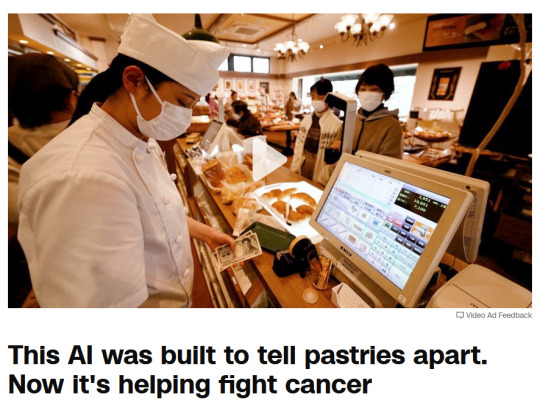
This was a big story in 2022, about a bread-checkout system in Japan that turned out to be applicable in checking for cancer cells in sample slides.
But that bonus anti-cancer discovery isn't the subject here, the actual bread-checkout system is. That checkout system worked, because it wasn't designed with the intent of making the checkout cashier obsolete, rather, it was there to solve a real problem: it's hard to tell pastry apart at a glance, and the customers didn't like their bread with a plastic-wrapping and they didn't like the cashiers handling the bread to count loaves.
So they trained the system intentionally, under controlled circumstances, before testing and launching the tech. The robot does what it's good at, and it doesn't need to be omniscient because it's a tool, not a replacement worker.
Amazon, however, wanted to offload its training not just on an underpaid overseas staff, but on the customers themselves. And they wanted it out NOW so they could brag to shareholders about this new tech before the tech even worked. And they wanted it to replace a person, but not just the cashier. There were dreams of a world where you can't shoplift because you'd get billed anyway dancing in the investor's heads.
Only, it's one thing to make a robot that helps cooperative humans count bread, and it's another to try and make one that can thwart the ingenuity of hungry people.
The foreign workers performing the checkouts are actually supposed to be training the models. A lot of reports gloss over this in an effort to present the efforts as an outsourcing Mechanical Turk but that's really a side-effect. These models all work on datasets, and the only place you get a dataset of "this visual/sensor input=this purchase" is if someone is cataloging a dataset correlating the two...
Which Amazon could have done by simply putting the sensor system in place and correlating the purchase data from the cashiers with the sensor tracking of the customer. Just do that for as long as you need to build the dataset and test it by having it predict and compare in the background until you reach your preferred ratio. If it fails, you have a ton of market research data as a consolation prize.
But that could take months or years and you don't get to pump your stock until it works, and you don't get to outsource your cashiers while pretending you've made Westworld work.
This way, even though Amazon takes a little bit of a PR bloody nose, they still have the benefit of any stock increase this already produced, the shareholders got their dividends.
Which I suppose is a lot of words to say:
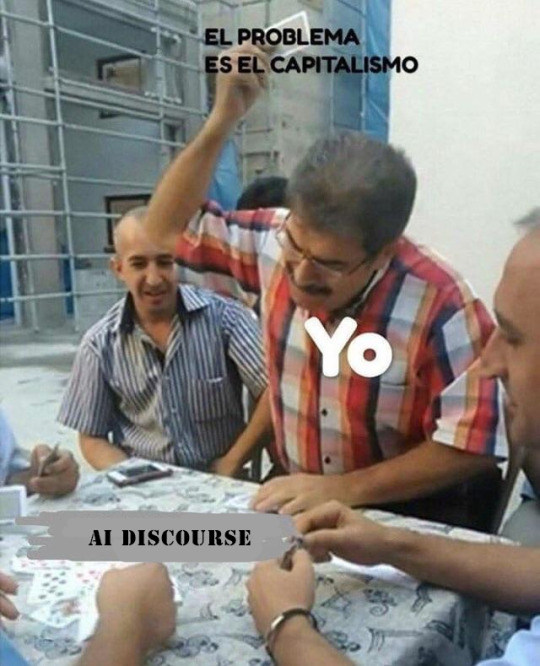
#amazon AI#ai discourse#amazon just walk out#just walk out#the only thing that grows forever is cancer#capitalism#amazon
148 notes
·
View notes
Text
F1 and Biometrics
Biometric gloves came into play in F1 in 2018 to give medical teams immediate access to important information regarding driver conditions after an incident. It allows for vitals to be measured before, at the time of an incident and after the crash until they are rescued and more advanced monitoring is able to be applied. It is also a big help if a driver is involved in a crash that means they are not accessible straight away or cannot be visualized for monitoring so this allows teams to get immediate access to this information.
According to the FIA website, this was a difficulty by medical teams when Carlos Sainz crashed in the 2015 Russian GP where he hit the barrier head-on at 153km/h (roughly 95mph). The first row of the barrier was resting on top of him, so medical teams had to wait for this to be removed before they had access to him. Thankfully he wasn’t hurt during this crash, but medical teams didn’t know this initially as this technology wasn’t available and being used.
The sensors were basically made custom to F1 drivers. Regular sensors had not been fire tested and were not comfortable enough for the drivers to wear for long races. They use Bluetooth technology and can send data within a 500m and are powered by a small battery that drivers charge before races.
Drivers gloves have a 3mm sensor that is stitched into the palm of the fabric and monitors their vital signs during races. They measure pulse oximetry which measures the amount of oxygen being carried in the blood as well as drivers pulse rates. Obviously if a driver has an injury that is affecting their breathing, this will show in the saturations that would decline rapidly. Having this technology allows physiological readings and biometrics to be continuously monitored throughout the race from start to finish. Data from the sensor transmits to an iPhone app and gives medical crews remote and advance information on the driver’s condition. The small biometric readers are flexible and fire resistant up to 1,800 degrees Celsius (3,272 degrees Fahrenheit) for 22 seconds.


In the future there are even plans to implement sensors for respiratory rate and temperature to further monitor drivers which will not only enhance safety features but allow teams and drivers to monitor performance better.
OMP, an equipment supplier, has been developing wearable biometric monitoring systems since the introduction of the biometric sensors in 2019. An undershirt equipped with sensors and a measurement unit would transmit and record biometric data allowing for real-time monitoring of health through ECG and thoracic expansion. This would allow monitoring of drivers heart rhythms and breathing rate which would not only benefit medical teams in the case of an incident but also help identify stress, fatigue and any alteration in conditions. This would be useful considering the amount of stress drivers have been put through in the past in hot countries for example Saudi Arabia GP 2023 when many drivers retired, had to be taken to medical, threw up in their helmets or passed out after the race.


TV crews can also display biometric data during broadcasts to show the physical condition of a driver as they battle on track. However, there have been questions about the ethics and use of biometrics and why can’t we as an audience see drivers heart rates etc on screen if this data is being constantly collected. The FIA has strict guidelines about the use of raw biometric data. Section 2.4 of the FIA Guidelines for the Collection and Usage of Biometric Data in Motorsport, states that the use of biometric data can be used for more than just medical and performance monitoring and can be used for entertainment and marketing purposes but only if it is changed from raw data into a variable to protect the private health information of the driver. The FIA won’t allow the use of biometric data to be publicly available in the original form/ measurement unless the driver provides informed consent.
Essentially, driver onboard vitals are likely not to be available live due to strict laws on data protection and sharing health related information about drivers as it is protected health information. In the case of an accident or emergency, data is not allowed to be used even if the information is changed to protect the driver unless it is for medical and rescue use and post-accident information.
Sources: (x) (x) (x) (x) (x)
This also led me down a rabbit hole and found another study (it was anonymous but if you’re a sleuth you can probably take a guess at what F1 driver it was) where they monitored his heart rate during qualifying to see what his average was throughout the race to test the cardiovascular strain F1 drivers are put under!
58 notes
·
View notes
Text
Locally adapted, decentralised innovation is reshaping what environmental monitoring in Africa

Projects like AirQo in Uganda and Clarity Nodes in Nairobi are deploying low-cost particulate matter sensors to create real-time urban air quality maps.
These portable devices, calibrated against reference stations, are not housed in government ministries—they’re installed in schools, markets, and transit corridors.
This hyperlocal, community-focused deployment marks a decisive shift toward monitoring as a distributed public good.
In the water space, compact mobile testing kits—some linked to smartphones—are enabling NGOs and universities to test for E. coli, nitrates, and fluoride in boreholes and streams. These kits don’t require lab infrastructure or formal training, making them ideal for community-led sampling in rural areas.
Remote sensing is also playing a vital role. Satellite data from programs like Sentinel and MODIS is being used to track vegetation loss, algal blooms, and surface water dynamics.
In Lake Victoria, a hybrid approach pairs satellite analysis with on-the-ground sensors—offering a model for blended, multilayered monitoring frameworks that don’t depend on centralised equipment alone.
Perhaps the most transformative development is the rise of citizen science networks.
In Ghana, Nigeria, and Uganda, residents are using hand-held air monitors to document conditions in their own neighbourhoods.
These datasets are often shared via open-access platforms, where they inform city planning and regulatory debates. They also demonstrate a growing confidence in decentralised data ownership and interpretation.
Universities across the continent are enabling much of this innovation. Institutions like the University of Cape Town and Makerere University are not only building and testing sensors but also training local technicians and hosting data platforms. Their work has become a central node in an emerging, distributed monitoring ecosystem.
Source
#solarpunk#solar punk#community#africa#environmental monitoring#citizen science#distributed public goods
19 notes
·
View notes
Text
Okay i lied , im not cutting off yandere sources cause i need Yves to cope with the high stress.
So here's some Yves content at the supermarket
Yves pays close attention to how and where your eyes linger at. Especially at grocery or other retail stores where there are a wide variety of objects. He notes down what catches your attention first, next and last, what caused you to do a double take and for how long. What colour, what texture, what shape and etcetera etcetera. He keeps count and remembers the sequences too.
It's fascinating, your habits change depending on the lighting, temperature, humidity, atmospheric pressure, smell and loudness of the area. Even the feeling of the flooring beneath your shoes would affect the duration you're willing to look at a product.
Yves would pretend to check the nutritional information of an item that claims to be "healthy" and "organic". But in actuality, he's watching you; do not underestimate his peripheral vision, it's almost as if he has eyes on the back of his head.
He would get a small rush of excitement whenever he predicts your next move successfully, shock and slightly more delightful when he's wrong; because that means he has discovered something new about you and must document his findings immediately.
How strange, you're exhibiting signs of under stimulation despite the fact that supermarkets usually fulfill your sensory needs, most of the time, overloading you. So Yves peruses the aisles even more, letting his heels clack against the tiled floors, pushing the shopping cart slowly and observing if the extra disturbances around you will do anything to your predicament.
But no, you're still uncomfortable. How interesting, how can Yves help you? He's dying to know, but he must run multiple tests discretely to find out.
However, before he could proceed, you walked up to him and stared at Yves in the eyes.
He replaced the can of diced tomatoes back onto the metal shelf before peering down at you. Yves intentionally chose to wear one of his taller heels to create that subconscious "guardian" role, making him ridiculously tall.
"Yes, dear?" He asked, bringing his fingers to your hair, gently brushing them away from your face. This seems to improve your mood, it made his heart skip a beat when he realized that you were craving for his touch.
You told him that it's nothing, you just wanted to see him.
Now that's not true, you wanted more but you're too shy and nervous to outright ask for it.
Yves smiled, softly coaxing you closer to his side, which made you automatically cling onto him and bury your head in his torso. Yves stroked your back rhythmically up and down.
While he lets you recharge in the side hug, Yves uses a free hand to inspect more canned items, he also likes guessing what additives might be added into each product and how much of each nutrient does it contain.
It's impressive how his brain works like a supercomputer with trillions of servers, his eyes, nose, ears, skin and tongue work as the world's best sensors. Yves is actively gathering the smallest, most detailed information about you, the environment, himself and whatever he has on hand. All that, without a struggle, without any clashes in thoughts or confusion in data. All that without overwhelming himself, not at all. He's in fact, very relaxed.
You let go of him when you had enough, but it seems you're not willing to fully part from his form yet as you're holding onto his large, smooth and manicured hand.
He walks to the next section of the aisle, pushing the trolley along with him and enveloping your smaller hand in his. He noticed that you've lost interest in looking around as canned goods bore you and you would very much rather look through shelves of candy and other junk foods. Where the companies work their predatory marketing tactics on unsuspecting customers like you.
If you wanted to, you would have left him alone to entertain yourself by now. But you're still stuck next to him as he reads the next list of ingredients.
He doesn't need to hide a delighted smile from you, as you're pushing your face against his lowest rib. Yves can express his glee at your very sweet and considerate gesture to accompany him despite your boredom.
He wanted to see how long you would last before he loses your consideration. That's why, Yves kept going through each can with you inching along next to him. Surprisingly, you're durable. But you're not exhibiting signs of weariness anymore, but instead, you're simply content and comfortable.
Strange. The buzzing, blinding lights above you and him, the monotony of the labels, the droning and other bustling noises would have driven you out of this aisle five minutes ago, let alone allow you to express... Happiness for being present. This isn't usual, Yves knows. He has observed you more times than you can count in this exact setting. Everything is more or less the same: the luminescence, the air quality and the decibels that your ears are picking up.
Except, the only variable that changed was him. His presence.
He gently called out your name, which prompted you to look up at him.
Yves pecked you on the lips, leaving a faint stain of his lipstick on your kisser.
"I love you." He whispered, biting onto his tongue immediately because he wanted to say much more. So much more. But he couldn't, it would be horrific for you to learn what he sees without your knowledge.
You stared at him, confused. Of course, you returned his words of affection. What baffled you was this glimmer in his breathtakingly beautiful, smiling eyes that would only appear if you did something extravagantly sweet and loving for Yves without expecting anything in return.
Like giving him a meaningful gift that you toiled for, trying your best to serenade him with an original piece of romantic music, going above and beyond to please or pamper him... What did you do?
Yves lets out a soft laugh as he watches you struggle to contain your excitement at the prospect of receiving that reward later at home. He can feel your tremors as you hold onto his hand.
Well, whatever it is, it surely earned you a very big reward. You're not one to look a gift horse in the mouth, so you gracefully accepted the silent message from Yves.
But for now, he must buy the groceries needed for the week, and all the ingredients to make your favourite dish of all time.
He pushed the cart to the next aisle, bringing you along with him.
#yandere#yandere oc#yandere x reader#yandere male#oc yves#yandere concept#tw yandere#yandere oc x reader#yandere x you#male yandere oc x reader
98 notes
·
View notes
Note
Recently I took a panorama of the Pittsburgh skyline at night that got a positive response. That was done on the spur of the moment with an iPhone. I want to do that again and more, but this time with a dedicated camera setup. It's been years since I've had one, so I'm basically starting over again. I'm mostly interested in getting day and night cityscapes, and maybe the carryings-on at this year's Anthrocon. Would you have any particular knowledge to pass on as I set off on this journey?
Since you didn't specify a budget I'm going to assume it is in the $10K range.
And you're probably thinking I'm going to suggest a Leica. Every dentist and his brother (who is also a dentist) gets a Leica. But I just can't take a camera brand seriously when they charge you an extra $2200 for the privilege of not being able to shoot in color.
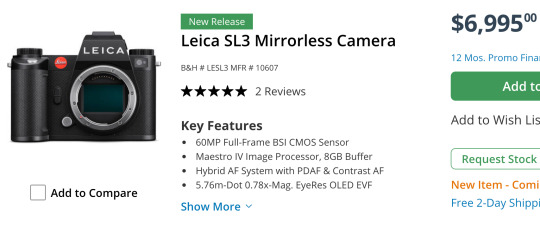
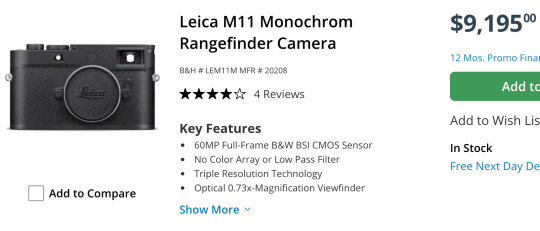
Sure, you can hit a single button in Lightroom to get B&W and save some money, but then you won't be able to brag about how limiting yourself to only shades of gray has opened up new artistic pathways in your brain while a clueless person responds in mumbles during their root canal.
What you really want for your landscapes is a Hassie.
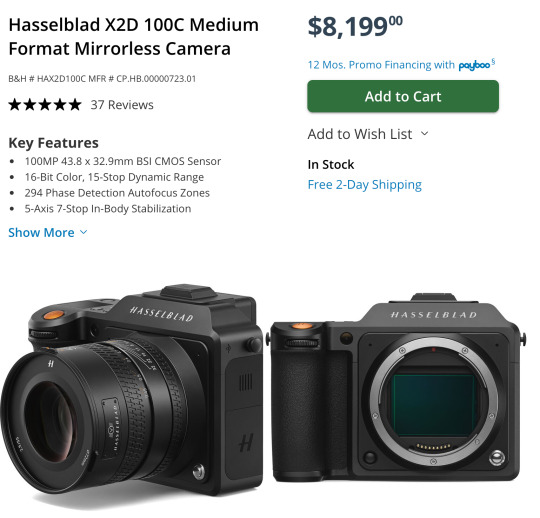
They were the first camera on the moon! How could you *not* want a Hasselblad? That is some camera gorgeousness right there. And it's so reasonably priced*!
*compared to their previous $40,000 camera systems.
And if you are doing landscapes with the Hassie you'll need a nice wide angle lens to go with it. This one is actually quite affordable*!
*compared to their previous $8000 lenses.
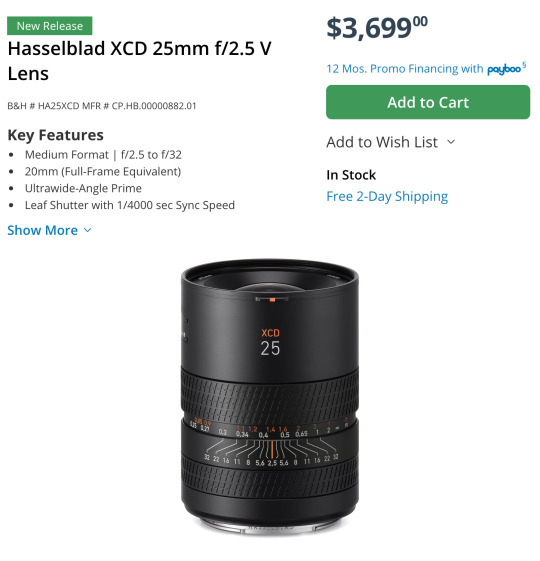
Can we all agree that is a work of art? They even use their H logo as the knurling.
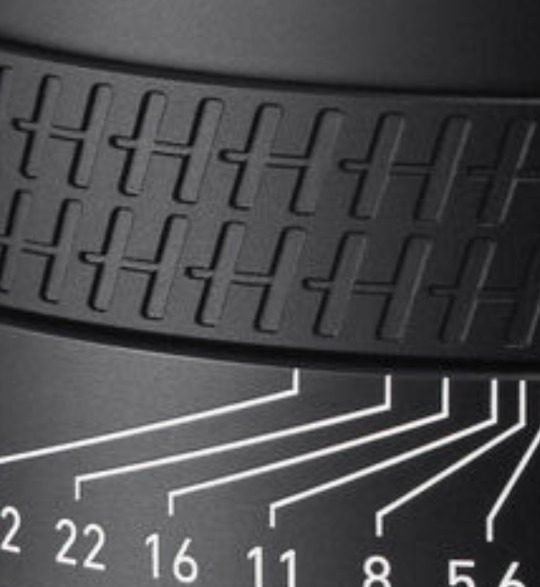
That is just so... extra. And I love it.
Out of the entire alphabet I've heard Hs give you the best grip.
Man, I almost wish I was a dentist just so I could buy a fancy camera.
Sorry... I was just having a little fun.
I never get to recommend the super cool expensive cameras. Because, ya know, the economy and the fact that only dentists have Hasselblad money.
You probably think I'm being silly but there actually is an entire community of dentist photographers keeping the high end camera market alive.
Okay, let's get started...
Landscape Buying Guide
Opening Thoughts
For landscapes I would highly suggest a full frame camera and a high quality wide angle lens.
Full frame has several advantages but it is not necessary. You can go with a smaller sensor like APS-C and get great images. Personally I would not go any smaller, but there have been some great landscapes taken on micro 4/3 and even smartphones. Technique, knowledge, experience, and composition will usually win the day over a camera, but having a nice camera makes things a lot easier.
At this point, with full frame options being very affordable now, the main reason to get a smaller sensor is if you want a smaller system that is easier to carry for extended periods and easier to pack when traveling. Or if you aren't sure you want to take on photography as a hobby, you can get an old APS-C DSLR for under $200 to learn with and test out.
So if you need a very cheap OR very compact system, APS-C and Micro 4/3 might be worth considering, but a bigger sensor will cause less frustration most of the time.
Froggie Note: The expensive Micro 4/3 and APS-C systems are the compact ones. The cheap systems are about as bulky as full frame.
The biggest advantages to full frame are low light shooting, lens selection, and field of view. Full frame cameras have many, many more lenses to choose from. And since the sensor is bigger, it is much easier to get a wider field of view that is often needed for landscapes. And the high ISO noise performance tends to be better on full frame.
However, you can use full frame lenses on APS-C camera bodies within the same ecosystem. They just get a little... zoomier. Roughly 1.5x zoomier. A 35mm acts like a 50mm, for example. So if you want to spend a little less now you can get an APS-C camera with a full frame lens and then upgrade to full frame later on without having to buy a new lens. Full frame lenses work on APS-C bodies but not the other way around.
Most landscapists have a really solid 16-35mm lens and that covers almost all of their needs. So I would suggest something comparable. Please don't get suckered into some crazy 18-300mm superzoom. Just get the focal range you need for the photos you want to achieve.
A purpose-built lens always outperforms one that was made to do everything.
As far as where to get used gear, I highly recommend using KEH or MPB when buying used camera bodies. They check every device and offer between 3 and 6 months warranty to make sure the device won't crap out on you. Lenses are typically a lot more robust and a safer thing to buy on eBay or Facebook Marketplace if you can find a better deal. But the security of having a warranty and a return apparatus if something goes wrong might be worth the extra price when using these two sites.
I am going to recommend Canon, Nikon, and Sony systems. I feel they have the most complete ecosystems with gear that spans all budget ranges. I'm not saying there aren't good cameras from other brands, but you have to remember every camera has an ecosystem surrounding it. There are accessories and upgrade paths and niche lenses that may not be available with other brands. I think Fuji has some tempting options and if you like the look of vintage film photography, their emulation options are quite stunning. Their cameras are also quite attractive and have very satisfying knobs. But I still can't recommend them unless you have a specific reason for wanting their gear.
Just remember that for every Canon DSLR I recommend there is a comparable Nikon option available as well. There are more lenses for a Canon full frame DSLR body than any other brand with Nikon coming in a close second.
So if you choose not to go mirrorless yet, the Canon and Nikon DSLR camera ecosystems are immense and have tons of gear and accessories available to go with them. And since used gear holds up really well, those ecosystems will survive for decades.
Should you buy a mirrorless camera or a DSLR?
Mirrorless cameras are the latest camera technology for interchangeable lens camera systems. At this point they are superior in every aspect and they continue to improve year by year. Because of that, used DSLRs have plummeted in price. This allows people greater access to a starter ILC (interchangeable lens camera) without a significant investment. You can get professional quality images on either format, but mirrorless has a shallower learning curve and much better automatic modes.
The in-body image stabilization (IBIS) stabilizes *every* lens and the eye tracking autofocus make "focus and re-compose" extinct. These are huge selling points for a lot of people. With IBIS you can take photos with up to 2-4 second shutter speeds without a tripod. And never missing focus on a human or animal or bird is pretty cool too.
DSLR camera bodies are no longer being designed by most of the major manufacturers. Thankfully Canon and Nikon developed plenty of bodies and lenses, so you will always have options and upgrade paths. But you will not be able to upgrade to systems with the latest advanced features.
The best DSLRs available are probably the Nikon D850 and the Canon 5D Mark IV. That is as good as it will ever get. The technology ends there. So if you want to enter an active camera ecosystem then you will have to get a mirrorless camera.
DSLR Camera Systems
Full Frame DSLR Camera Bodies
Canon
If you buy a used DSLR, there are some very affordable full frame options. In fact, the classic much-praised budget full frame Canon 6D can be had for under $300 right now.
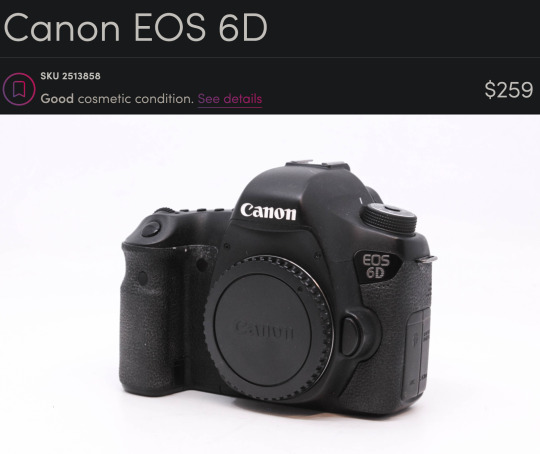
This is an old camera. It has no fancy features. It only has 20 megapixels. It just does what it says on the tin. But it has a big sensor and a *ton* of really cool lenses available for it.
If you are specifically looking to create really high resolution panos, you could also look at the 50 megapixel 5DS R for around $1000.
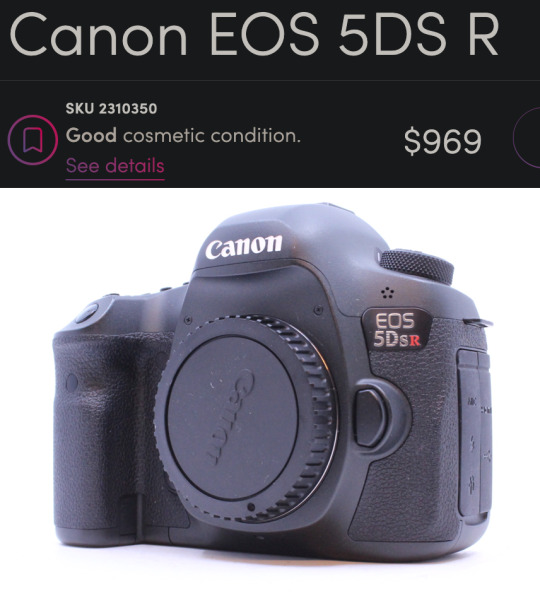
There is a community of landscape pano-maniacs that love to create "gigapans" that have endless amounts of detail where you can zoom in and find new details in every photo. I was only able to create a 120 megapixel photo, but you can still find things like people starting a campfire and a dude fishing and a truck on a far off bridge. So even though this seems expensive for a DSLR, you are looking at another thousand bucks to find anything with more megapixels than this bad boy, so it is quite a good deal relatively speaking.
Nikon
Probably the best DSLRs ever made were the Nikon D800 series and you can get the Nikon D800 for $464.
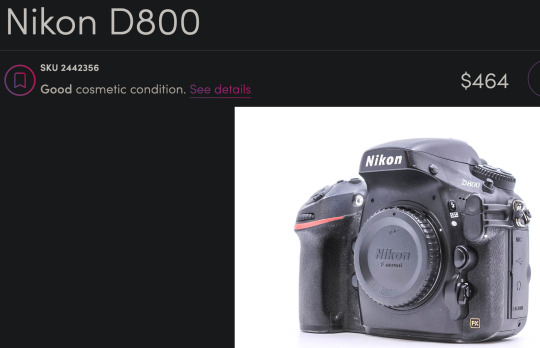
This is a newer camera than the 6D with more megapixels (36) and a better sensor. It also has a more modern autofocus system and about 3 more stops of dynamic range which can come in handy for landscapes. This is an incredible camera for this price.
APS-C DSLR Camera Bodies
If you aren't sure you want to commit to this hobby, you can look into a Canon APS-C sensor body like the Canon Rebels and Canon 60D through 90D models and get good results.
And there are many Nikon DX APS-C bodies that would be great starter cameras as well. If you get a Nikon, you'd have an upgrade path to the D800 if you get hooked by the photography bug. I would miss a few very special Canon lenses like the 100mm f/2.8L macro and the 400mm f/5.6 telephoto but I'm sure I could figure out some reasonable Nikon alternatives that would do roughly the same thing.
Canon APS-C
There is a Canon 60D for $139 right now that would be perfectly adequate for landscape work on a tripod.
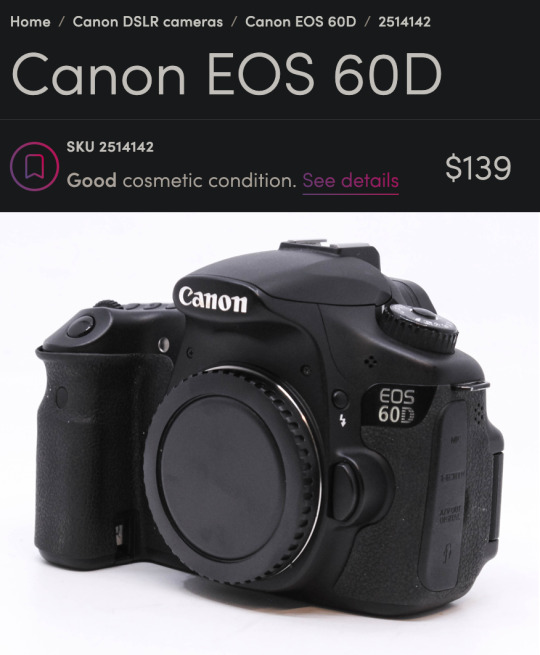
That was my first camera and I took some very nice photos with it. Only 18 megapixels but it has a very convenient flippy screen which was really helpful for a disabled photographer trying to get low angles.

This was in 2014 and I didn't know what I was doing but that is a pretty stellar-looking sunset for a (now) $140 camera.
Nikon APS-C
And the Nikon D3400 would be a great option as well at around $184.
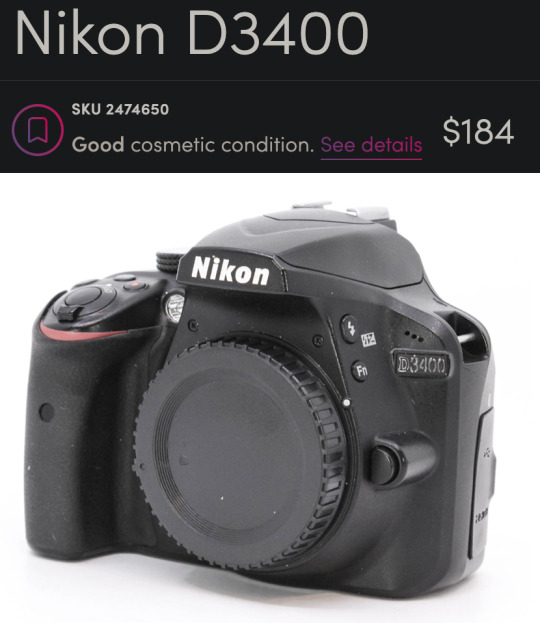
You get some extra megapixels (24) and it is a bit newer than the Canon. I get the sense that used Nikon DSLRs give you more value for your money right now but I don't have a large enough sample size to confirm that.
Full Frame DSLR Lenses
Froggie Note: I am recommending full frame lenses even if you choose an APS-C DSLR body so you have an upgrade path. But also very few purpose-built APS-C lenses had superior glass. Just remember, crop sensor APS-C cameras add ~1.5x to your focal length. So a 16-35mm will have the equivalent field of view of a 24-50mm lens. Still quite acceptable for landscapes, but you may benefit from doing panoramas more often. And if you upgrade to full frame down the road, you'll already have the ideal lens.
Canon DSLR Lenses
If you get the 6D or another Canon you could pair it with the beloved-by-landscapists Canon 16-35mm f/4L.
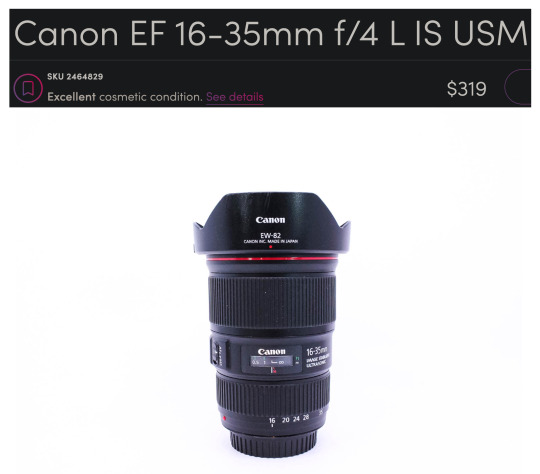
Honestly, it is blowing my mind you can get that combo for under $600. Me from 12 years ago is super jealous right now.
If you are worried you might need something to work in lower light and still want a zoom, the f/2.8L starts at around $434.
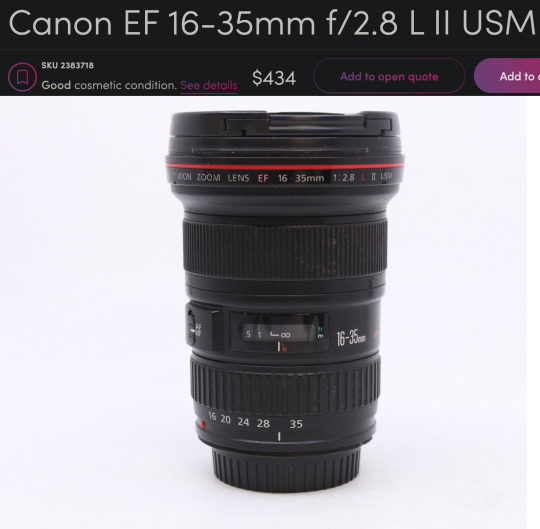
This might be the most famous landscape lens of all time. Kinda boggles the mind how many gorgeous vistas this thing has captured the light of.
If you can live without the zoom, you could get a much sharper prime lens that can also be used in even lower light. A used Sigma 24mm f/1.4 Art lens is $439 would be a fantastic option.
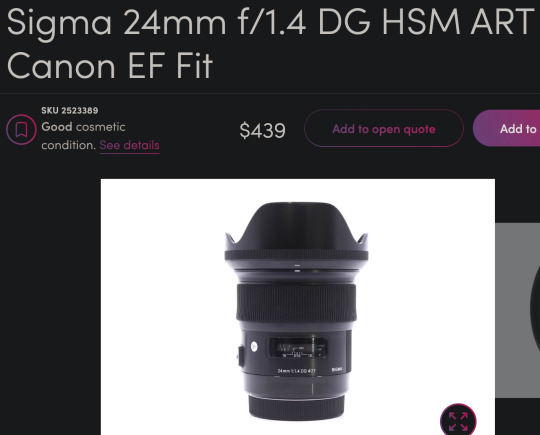
24mm is still a very good focal length for landscapes and the sharpness of this lens lends well to panoramic stitches. Seriously, these art lens are so freaking sharp. Although 35mm is typically preferred for most street photography, I think this would do great for that purpose as well. It couldn't do close up portraits, but 3/4 and full body portraits would look great. I also love this focal length for doggos. It enlarges their heads a bit which enhances adorable-ness.
Though I probably wouldn't recommend the 24mm on APS-C for landscapes as it would put you near a 40mm full frame equivalent field of view.
Nikon DSLR Lenses
And on the Nikon side of things you could get the Nikkor 16-35mm f/4 for $399.
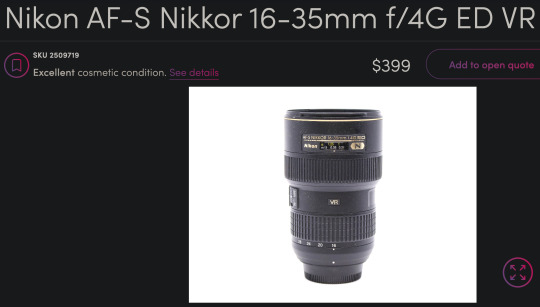
This is a great lens too. Very comparable to the Canon L glass. And paired with that D800 you would have a better shooting experience than with the 6D if it fits within your budget.
It's a little harder to find, but you can also get that same Sigma 24mm f/1.4 Art lens for Nikon at around $528 used on Amazon and in the $400 range on KEH and MPB when it is available.
The older and softer Nikkor 28mm f/1.8 is a little more affordable and easier to find.
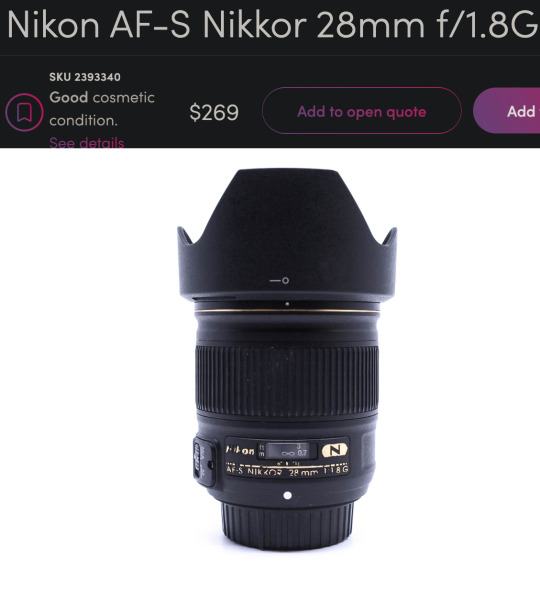
What if you are not a dentist but are willing to save up for something a little nicer?
Enter the world of...
Mirrorless Camera Systems
Sony currently has my favorite ecosystem of mirrorless cameras and lenses and they are consistently ahead of the other brands as far as technology and features. In fact, many other manufacturers use Sony sensors. They literally supply their competition with their own tech. They are also pretty good about updating firmware—even with older models. So I feel like Sony has a lot of future-proofing advantages over other brands. Sony has a great selection of 3rd party lenses like Sigma, Tamron, Viltrox, Laowa, Samyang, etc. These lenses often have nearly the same optical quality as Sony's G Master lenses at a fraction of the price.
Full Frame Mirrorless
Currently, I think the best value full frame mirrorless camera for landscapes would be the Sony a7R III.
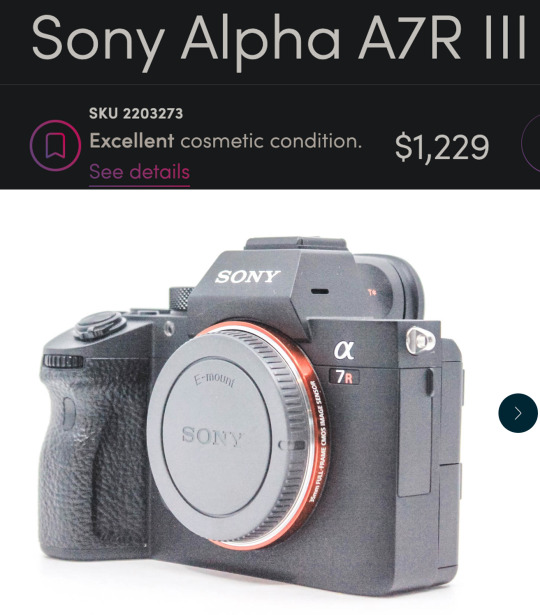
This is very nearly a top-of-the-line landscape camera for a little over $1200.
That might sound like a lot, but I want to be clear...
This isn't just decent. This isn't "good enough." This is a spectacular professional grade full frame camera.
10 years ago you could spend $6500 for a *worse* camera. 5 years ago you could spend $3000 for a *worse* camera.
It can do every genre of photography except for maybe fast paced sports/action. It has an amazing 42 megapixels—which are not necessary but they do make editing and printing a lot less of a headache. The file sizes can get a little big, but storage is a lot cheaper than it used to be.
Oh, and it can be used for professional quality 4K video work too.
The a7R III comes with all of the modern bells and whistles including in-body stabilization (IBIS) so you can handhold at very slow shutter speeds. It has one of the best autofocus systems—complete with eye tracking. But not just human eyes! Dog eyes. Cat eyes. Bird eyes. If it has an eye, the Sony can probably lock focus on it. And it has an admirable 10 fps burst shooting mode.
APS-C Mirrorless
If you want to enter the Sony ecosystem but can't afford full frame quite yet, you could do the a6400 for about $600.
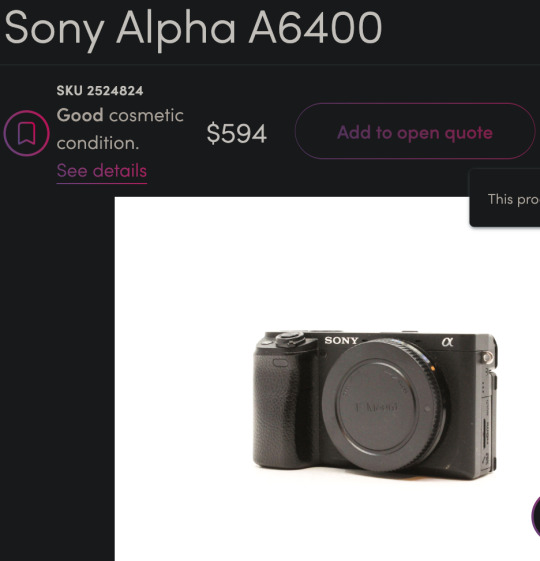
You still get the eye-tracking and the in-body stabilization, but you will lose some image quality at higher ISOs due to the smaller sensor size. However, you can get the same full frame E-mount lenses for it and upgrade to a bigger sensor later on and not have to buy new lenses.
Mirrorless Landscape Lenses
I think a good value landscape lens would be the very impressive Tamron 20-40mm f/2.8.
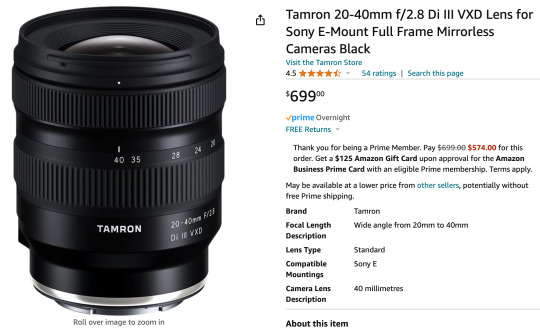
This is a newer lens so there aren't many deals on used options yet. But this is still a great price for the quality and versatility you get. You will never regret spending a little more on glass.
The 20mm range can fit an entire cityscape in the frame without needing to do a panorama. But if you zoom to 40mm and mount the camera vertically, you could stitch together several photos to get well over the 100 megapixel range.
Also, the 40mm focal range is long enough to do street photography and even head & shoulder portraits. The wide f/2.8 aperture combined with the high-ISO friendly full frame sensor and in-body stabilization means you can shoot in very low light without a tripod. You can also get some great pictures of stars if you travel to someplace with minimal light pollution.
The cheapest landscape zoom lens I could find was the Sony 16-35mm f/4 at $384.
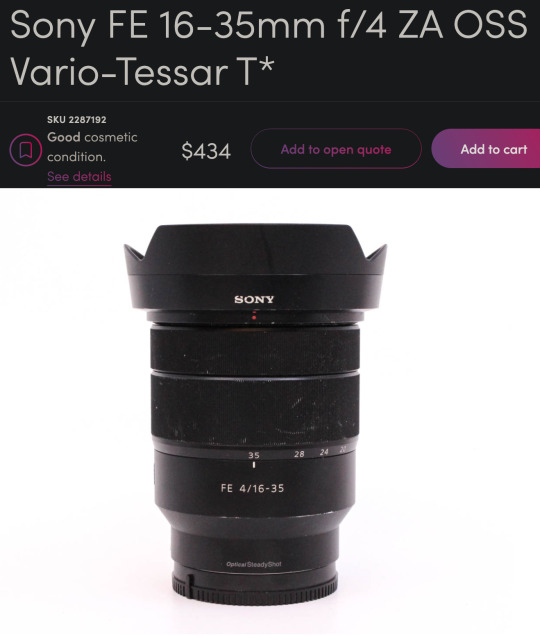
It's one of Sony's older lenses and may not take advantage of all of the a7R III's pixels, but it would be a good option to get you started in this system and upgrade the lens later on.
Mirrorless Prime Lenses
Zoom lenses are great but you have to spend more to get tolerable quality. Kit zooms can be softer than even the tiny plastic lenses on your phone. So a great way to stretch your budget is to get multiple fixed focal length "prime" lenses. Primes can be built inexpensively while still having good low light performance and decent sharpness.
For instance, you could start with something like the Tamron 20mm f/2.8 for $175. And if you want to do more than landscapes you could add the Sony 50mm f/1.8 for $170 later on. Cheap primes will outperform any of those mediocre kit zoom lenses in that same price range. You lose some versatility and have to deal with the pain of changing lenses or zooming with your feet, but sometimes a tight budget demands a little pain.
There is also a higher quality 3rd party wide angle prime lens that is very popular right now. The Viltrox 16mm f/1.8 is only $549 and the reviews say it has similar quality to lenses 3 times its price.
If you have to choose between a better camera body or a better lens, a good lens will help your photos more than a fancy camera body.
Froggie Note: These are examples. You should always do your own research before making a major technological purchase. This post could be a year old by the time you see it and there could be new stuff that is better. But all of the principles I tried to convey should hopefully guide you to a good decision. Also, feel free to message me if you want to ask about specific gear you are considering purchasing.
More Resources
This is my Encyclopedia of Lens Terms which is a helpful primer in understanding all of the wonderful and different lens options available on ILCs.
This is my buying guide for low budget used DSLRs. Similar to this post but less geared toward landscapes.
And this guide for getting decent landscape photos with any camera.
This is a free tutorial that teaches you everything you need to get started with an ILC system.
youtube
And this free tutorial by Karl Taylor is quite good as well.
70 notes
·
View notes
Text
To hear some of them tell it, the companies selling continuous glucose monitors have stumbled upon a heretofore unknown quirk of human biology. Seemingly healthy people, many of these companies argue, have “glucose imbalances” that need to be monitored and, with dietary vigilance, eradicated. Millions of people are going through life eating bananas, not knowing that their blood sugar is rising with every bite. This must be stopped.
To this end, the companies market the continuous glucose monitor, or CGM, a quarter-size sensor that takes a near-constant measure of the glucose in the fluid between a person’s cells. Once inserted into an arm, the sensor allows the wearer to monitor their blood-sugar levels on a phone app for $80 to $184 a month. Doing so allows you to “see the impact of what you eat” (according to the company that sells Lingo), to “motivate behavior change and encourage healthier choices” (according to Levels), and to “personalize your approach” to weight loss, because “everyone’s journey is different” (according to Nutrisense).
The gadgets have been revolutionary for many people with diabetes—previously the main available device for measuring blood sugar required users to prick their fingers multiple times a day. Many insurers cover CGM prescriptions for diabetics; they can pick up the devices at the pharmacy just as they would blood-test strips. But when I asked a half dozen experts whether people who don’t have diabetes should wear CGMs, I got a resounding “Meh.” “It’s a free country. People can pay money for whatever they feel like doing,” David Nathan, a diabetes expert at Harvard, told me. “But from a medical point of view, I am personally unconvinced that they lead to any health benefit.”
Relying on a Harvard diabetes expert to give you diabetes advice, however, goes against the general ethos of the “Make America Healthy Again” movement, many of whose members have been heavily promoting CGMs in recent months, including to people who don’t have diabetes. Robert F. Kennedy Jr., the secretary of Health and Human Services, talked them up in an April CBS interview as “extraordinarily effective in helping people lose weight and avoid diabetes.” At his Senate confirmation hearing, before becoming Food and Drug Administration commissioner, Marty Makary said glucose monitors help people “learn about what they’re eating.” Casey Means, the wellness influencer whom President Donald Trump nominated for surgeon general, has said that more Americans should use CGMs too. (As it happens, she is a co-founder of Levels.) “I believe CGM is the most powerful technology for generating the data and awareness to rectify our Bad Energy crisis in the Western world,” Means wrote in her best-selling book, Good Energy. (Bad Energy is her term for the metabolic dysfunction that she believes to be at the root of many chronic health problems.)
The devices are emblematic of the self-reliance that characterizes the MAHA movement. “The Casey Means’s of the world,” Alan Levinovitz, a James Madison University religion professor who has studied alternative health, told me in an email, “are using the rhetoric of naturalness as a way of telling people they can have complete control and expertise over their own health—which is the natural way to be healthy, rather than outsourcing that wisdom to top-down elites.” Indeed, one of the chapters of Good Energy is titled “Trust Yourself, Not Your Doctor.” (Means did not respond to a request for comment.)
CGMs appear to have trickled into MAHA world from the Joe Roganosphere, helped along by the fact that the devices, which in the past had been prescribed mainly to diabetics, were made available last year for purchase over the counter—that is, by anyone. Five years ago, Paul Saladino, a doctor who promotes an “animal-based diet,” said on Rogan’s podcast, “This is the kind of stuff that really tells you about your metabolic health. There’s no way to lie with a continuous glucose monitor.” Since then, CGMs have been endorsed on popular wellness podcasts such as Andrew Huberman’s Huberman Lab and Dave Asprey’s The Human Upgrade, and by pop-health doctors such as Peter Attia and Mark Hyman, the latter of whom called the CGM “a gadget that has completely changed my life.” A wellness influencer known as the Glucose Goddess said that although they may not be for everyone, CGMs can be “a pretty incredible tool to start to connect what you’re eating with what’s actually happening inside of your body,” and offers a guide to them on her website. Gwyneth Paltrow, the empress of Goop, was recently spotted wearing one.
Sun Kim, a Stanford endocrinologist, told me that a few years ago, “I was literally contacted by a start-up almost every month who wanted to incorporate a CGM” into their products. Of course, some CGM companies do specialize in people who have diabetes and need around-the-clock monitoring. But Kim and others I spoke with told me they suspect that, to boost sales, CGM manufacturers are trying to expand their potential-customer base beyond people living with diabetes to the merely sugar-curious.
Jake Leach, the president of Dexcom, maker of the over-the-counter CGM Stelo, told me via email, “Stelo was originally designed for people who have Type 2 diabetes not using insulin and those with prediabetes, however, given the broad accessibility of this device, we are encouraged to see people without diabetes interested in learning more about their glucose and metabolic health.” A spokesperson for Dexcom pointed out to me that most people with prediabetes are undiagnosed. Fred St. Goar, a cardiologist and clinical adviser for Lingo, told me in a statement that CGMs can be beneficial for nondiabetics because “understanding your body’s glucose is key to managing your metabolism, so you can live healthier and better.”
Scant research exists on how many nondiabetic people are buying CGMs, but anecdotally, some providers told me that they are seeing an uptick. Nicola Guess, a University of Oxford dietitian and researcher, said that “10 years ago, no, I never saw anyone without diabetes with a CGM. And now I see lots.” Mostly, she said, they’re people who are already pretty healthy. In this sense, CGMs are an extension of the wearables craze: Once you have an Oura Ring and a fitness tracker, measuring your blood sugar can feel like the next logical step of the “journey.”
Should people who aren’t diabetic wear one of these? Health fanatics who have $80 a month to burn and want to see how various foods affect their blood sugar are probably fine to wear a CGM, at least for a little while. Spoiler: The readout is probably just going to show that eating refined carbs—such as white bread, pasta, and sweets—at least temporarily raises blood sugar to some degree.
Normal glucose patterns for nondiabetic people tend to vary quite a bit from meal to meal and day to day. Most nondiabetics’ blood-sugar readings will typically fall within the “normal” range of 70 to 140 milligrams per deciliter. But many healthy people will occasionally see spikes above 140, and scientists don’t really know if that’s a cause for concern. (“Great question” is a response I heard a lot when I asked.) In the studies he’s worked on, Kevin D. Hall, a former National Institutes of Health nutrition scientist, has found that even in tightly controlled settings, people’s blood-sugar levels respond very differently to the same meal when eaten on different occasions. Given all these natural deviations, a CGM may not be able to tell you anything especially useful about your health. And CGMs can be less accurate than other types of blood-sugar tests. In another study, Hall and his co-authors stuck two different brands of CGM on the same person, and at times, they provided two different blood-sugar readings. The conclusion, to Hall, was that more research is needed before CGMs can be recommended to nondiabetics.
What’s more, blood sugar depends on sleep, stress, and exercise levels, and whether any given meal includes protein or fat. If you notice a spike after eating a banana, the banana might not be the reason. It might be the four hours of sleep you got the previous night, because sleep deprivation can affect the hormones that influence blood sugar. As a result, Guess said, “a CGM cannot tell you whether a single food is right for you”—though some CGM enthusiasts make this promise. (A CGM can help you “learn your reaction to individual foods and meals,” Means has written.)
For some people, tracking data does help nudge them toward healthier behaviors. If you get a clear readout from a CGM that your blood sugar has risen after you’ve eaten refined carbs, and it moves you to eat fewer refined carbs, that’s not necessarily a bad thing. But researchers haven’t found evidence yet that nondiabetic people eat better after wearing a CGM. And if you know how to read a CGM, you probably already know what a healthy diet looks like. You could just eat it. Anne Peters, a diabetes researcher at the University of Southern California, told me, “You could just not wear it at all and tell yourself to eat more vegetables and a more plant-based diet and eat healthy, lean protein.”
Many of the biohackers who talk up CGMs also promote a low-carb, protein-heavy diet that would include a T-bone more readily than a Triscuit. (Asprey, the man behind The Human Upgrade, recommends putting butter in coffee.) The potential downside of glucose monitoring is that people who are (perhaps needlessly) alarmed by their CGM data will swap out healthy carbs such as fruit and whole grains for foods that are less healthy—butter, for example, or bacon and red meat. Those foods don’t make an impact on blood sugar, but they can affect other markers of health, such as cholesterol and body fat. Eat a stick of butter, and your CGM will probably show a flat, pleasant line. But your arteries may protest.
I noticed these perverse incentives myself during my pregnancy, when I had gestational diabetes and wore a CGM to manage my blood sugar. A bowl of heart-healthy oatmeal would cause my blood-sugar reading to soar to an unacceptable 157, but a piece of cheesecake—with loads of fat balancing out the sugar—would keep it safely under my goal level of 135. At the time, I wanted to eat whatever kept my blood sugar low, for the sake of my baby. But few dietitians would advise healthy people to eat cheesecake instead of oatmeal every morning.
Glucose, after all, is just a small part of the picture of human health. “Waist circumference, blood pressure, LDL cholesterol, resting heart rate—they are much better measures of how healthy someone is than glucose,” Guess said. And watching a real-time readout of your blood glucose can become an obsession of sorts—not an entirely harmless one. “Something being a waste of time is a net harm,” Guess told me. “There is something unethical to me about filling people’s heads with worries that never come to pass.”
Many of the researchers I spoke with said that if you are concerned you might have diabetes or prediabetes, you could just get an A1c blood test at your annual physical. Like a CGM, it, too, measures blood sugar, but much more cheaply and without requiring you to wear a device all the time. And if it shows that you’re at risk of developing type 2 diabetes, you could do what doctors have suggested doing for decades now: Eat a diet rich in vegetables and lean proteins, and get some exercise most days. (“Duh,” Nathan said.)
One way for Kennedy and others in the Trump administration to find out if CGMs do all they say they do would be to fund studies on whether CGMs are helpful, and for whom. Quite the opposite is happening. Hall recently left Trump’s NIH because he believed he was being censored when speaking about the results of studies that conflicted with Kennedy’s views, and Nathan’s diabetes-prevention study was recently frozen by the Trump administration. So far, the administration has ended or delayed nearly 2,500 NIH grants, including some related to researching blood glucose. If the Kennedy-led HHS department truly would like to make America healthy again, it could stop defunding the people studying Americans’ health.
6 notes
·
View notes
Text
Why have headlights on vehicles gotten so bright in recent years?
The increasing brightness of vehicle headlights is driven by advancements in technology, safety regulations, and changing vehicle designs. Here’s a detailed breakdown of the key factors:
Technological Advancements in Lighting • Shift to LED and HID Lights:
Modern vehicles increasingly use LED (Light-Emitting Diode) and HID (High-Intensity Discharge) headlights, which produce brighter, whiter light compared to older halogen bulbs. LEDs are up to 300% brighter than halogens while consuming less energy. • Laser Headlights: Emerging in luxury vehicles, laser technology offers even greater brightness and precision, though adoption remains limited due to cost.
• Improved Focus and Efficiency:
LEDs and HIDs emit a more focused beam, enhancing visibility for drivers but creating harsher glare for others. Their design allows for sharper cutoffs and adaptive features, such as automatically adjusting beams to avoid blinding oncoming traffic.
Safety Regulations and Ratings • Stricter Safety Standards:
Organizations like the Insurance Institute for Highway Safety (IIHS) now require headlights to illuminate at least 325 feet ahead to earn a "good" safety rating. This pushes automakers to prioritize brighter lights. • Example: By 2020, all IIHS-tested vehicles offered headlights meeting this standard.
• Global Regulatory Alignment:
Standards from the NHTSA (U.S.) and European Commission mandate limits on glare while encouraging innovations like adaptive lighting systems.
Vehicle Design Trends • Rise of SUVs and Trucks:
SUVs and trucks now dominate the market (45.9% of global sales in 2021). Their taller stance positions headlights at eye level for drivers of smaller cars, amplifying perceived brightness and glare. • Example: GM recalled 740,000 SUVs in 2022 due to complaints about blinding headlights.
• Aesthetic and Functional Integration:
Brighter headlights are often marketed as premium features, aligning with consumer demand for both safety and sleek, modern designs.
Human Perception and Unintended Consequences • Blue Light Sensitivity:
LED headlights emit a cooler, bluish-white light (5,000–6,000 Kelvin), which the human eye perceives as harsher than the warmer tones of halogens (~3,200 Kelvin). This can cause temporary blindness or discomfort.
• Aging Drivers and Eye Health:
Older drivers are more susceptible to glare due to age-related eye conditions like cataracts. Surveys show 25% of drivers over 65 avoid nighttime driving because of bright headlights.
Future Trends and Solutions • Adaptive Lighting Systems:
Innovations like ADB (Adaptive Driving Beam) use cameras and sensors to dim specific segments of the light beam, maintaining brightness for the driver while reducing glare. • Example: Mercedes’ DIGITAL LIGHT projects symbols (e.g., arrows) onto the road to enhance communication.
• Regulatory Revisions:
Authorities are exploring updated standards to balance brightness with safety. The EU has already mandated adaptive headlights for new vehicles starting in 2023.
Key Takeaway Brighter headlights stem from technological progress and safety demands, but they also create challenges like glare. While innovations like adaptive beams aim to mitigate these issues, drivers can take steps to reduce discomfort: • Use night-driving glasses with anti-glare coatings.
• Adjust rearview mirrors to night mode to dim reflections.
• Ensure headlights are properly aligned to avoid upward glare.
The industry continues to evolve, striving for a balance between illumination and road-sharing safety.

#car lights#led car light#youtube#led auto light#led headlights#led light#led headlight bulbs#ledlighting#young artist#led lights#american cars#car culture#cars#classic cars#car#headlight bulb#headlight restoration#headlamp#headlight#car lamp#lamp#bright
7 notes
·
View notes
Text
Apropos nothing... Everyone always talking about quantum computing and quantum information as the big second-generation* quantum-tech applications. (Someday I will get into what I think about quantum computing.) But there's a whole world of quantum sensing out there that's way more successful, starting with atomic clocks, which are already an established second-gen quantum technology.
Here's a recent result in quantum sensing:
* First-generation quantum tech is things that rely on the quantum nature of materials. The whole semi-conductor industry, and lasers, are the primary examples. Second-generation quantum tech is technology that relies on quantum control: the active building and control of quantum systems. By far the earliest example, and the most commercially advanced, is quantum clocks. But there are other types of quantum sensors on the market (mainly quantum magnetometers).
#quantum sensing#quantum technology#there are a couple secondary articles on this that are way flashier than this one that are much easier to stumble across#but they all link back to this and I assume this is the most accurate
9 notes
·
View notes
Text
Quantum computers:
leverage the principles of **quantum mechanics** (superposition, entanglement, and interference) to solve certain problems exponentially faster than classical computers. While still in early stages, they have transformative potential in multiple fields:
### **1. Cryptography & Cybersecurity**
- **Breaking Encryption**: Shor’s algorithm can factor large numbers quickly, threatening RSA and ECC encryption (forcing a shift to **post-quantum cryptography**).
- **Quantum-Safe Encryption**: Quantum Key Distribution (QKD) enables theoretically unhackable communication (e.g., BB84 protocol).
### **2. Drug Discovery & Material Science**
- **Molecular Simulation**: Modeling quantum interactions in molecules to accelerate drug design (e.g., protein folding, catalyst development).
- **New Materials**: Discovering superconductors, better batteries, or ultra-strong materials.
### **3. Optimization Problems**
- **Logistics & Supply Chains**: Solving complex routing (e.g., traveling salesman problem) for airlines, shipping, or traffic management.
- **Financial Modeling**: Portfolio optimization, risk analysis, and fraud detection.
### **4. Artificial Intelligence & Machine Learning**
- **Quantum Machine Learning (QML)**: Speeding up training for neural networks or solving complex pattern recognition tasks.
- **Faster Data Search**: Grover’s algorithm can search unsorted databases quadratically faster.
### **5. Quantum Chemistry**
- **Precision Chemistry**: Simulating chemical reactions at the quantum level for cleaner energy solutions (e.g., nitrogen fixation, carbon capture).
### **6. Climate & Weather Forecasting**
- **Climate Modeling**: Simulating atmospheric and oceanic systems with higher accuracy.
- **Energy Optimization**: Improving renewable energy grids or fusion reactor designs.
### **7. Quantum Simulations**
- **Fundamental Physics**: Testing theories in high-energy physics (e.g., quark-gluon plasma) or condensed matter systems.
### **8. Financial Services**
- **Option Pricing**: Monte Carlo simulations for derivatives pricing (quantum speedup).
- **Arbitrage Opportunities**: Detecting market inefficiencies faster.
### **9. Aerospace & Engineering**
- **Aerodynamic Design**: Optimizing aircraft shapes or rocket propulsion systems.
- **Quantum Sensors**: Ultra-precise navigation (e.g., GPS-free positioning).
### **10. Breakthroughs in Mathematics**
- **Solving Unsolved Problems**: Faster algorithms for algebraic geometry, topology, or number theory.
#future#cyberpunk aesthetic#futuristic#futuristic city#cyberpunk artist#cyberpunk city#cyberpunkart#concept artist#digital art#digital artist#quantum computers#the future of quantum computers#futuristic theory
5 notes
·
View notes
Text
*kicks your door down holding Jack-o-Moon in my arms*
ITS TIME TO FERALLY THEORIZE.
So first off I'm not very good at the classic Fnaf theorizing, this will be a first for me lol. So I'm probably missing a bunch of information but this is just a theory for funsies anyway.
Alright so first off this video here gives a pretty good look at their model. So I'll mostly just being using that and what I've seen playing the game.
So it's made very clear the model is completely identical to Sun and Moons and his mannerisms are identical to Moons, between voice lines and movements.
That being said I think that he is or was to some degree Moon. Not the moon we know of course, he's still with Sun.
It's definitely Moon's body since you can see the blue where the orange paint is chipping off. (This could be because the paint could be blocking any light sensors so he is just permanently stuck in moon mode.)
He also acts slightly differently from Moon on the carousel ride, where Moon attacks right after he reaches the third row, Jack-o-Moon hangs out in the middle for a moment just observing before his jumpscare.
And when you shine the bright light on him on Foxy's ride, he is distressed and flies away. I could be wrong here but it didn't seem like it even started to cause and shifts to a Sun form (circle back to light sensors being painted over) just distressed bight the evil overhead light.
So theory time.
1. Jack-o-Moon is another version of Moon, stored away as a seasonal animatronic, and was a backup of Moon (and maybe Sun) from their theater days. There is no indication they know anything about childcare, but they certainly put on their own little performance on the set of Foxy's log ride.
2. I'm wrong in thinking Moon is still with Sun and somehow they managed to get him his own body from an abandoned Halloween version of them. Probably very unlikely but I'll leave it as a possibility.
3. Fazbear started to make separate bodies for Sun and Moon when the virus, but to test it out they copied Moon's code over to the new body. When he still showed slight signs of the virus they just threw some paint on them added some fancy LEDs changed their outfit and marketed him as a scary Halloween version they could store away from the public while still using once a year so they didn't throw away money on something that didn't work. (This would also explain why they seem more curious on the carousel compared to Moon. They don't get to see people as much.)
So yeah. Just some brain rot I figured I'd ramble on about. Cus I'm totally normal about Jack-o-Moon.
#fnaf daycare attendant#fnaf moon#moondrop#jack o moon#fnaf sun#hopefully this posts right#tumblr and i have battles with long posts
25 notes
·
View notes
Note
the air purifier advice please 🙏
hello!!!!! yes, i will info dump some of the things i come across at work everyday, hopefully it helps!
Quick overview on how air purifiers work: ok so purifiers don't "kill" bacteria/particles which is a lot of the marketing you'll see, air purifiers take in air, filter out particles, and push out clean air back into your home so you don't breathe in the dangerous particles: it's all about airflow (created with a strong motor) and filter type
ONLY trust HEPA and activated carbon filters. every other "technology" out there is not sound, there's no definitive research that proves the effectiveness of any other tech on the market. at best it's ineffective, at worst it's dangerous, i wouldn't trust any of it. some common types of technologies to avoid: ozone generators, ionizers, uv light, when a company has their own "patented tech" that isn't HEPA or carbon
HEPA: this targets airborne particles. dust, pet dander, mold spores, pollen, smoke particles
ACTIVATED CARBON: this targets gasses, volatile organic chemicals (VOCs), odors, smoke odors
Try to find a purifier that's going to cover a lot of your home or at least an entire room - they're portable so I suggest moving them around during the day if you can and bringing them into your bedroom at night.
Finding a purifier that covers your home/room: suggested air changes per hour (ACH) is 4.8 - many companies will list 1 ACH for their square foot coverage to make it seem like it can cover a lot, and it's just not true. Companies SHOULD be sharing their clean air delivery rate (CADR) information that is connected to ENERGY STAR and is tested by the regulatory agency so they cannot fudge their numbers, if they don't share this information it's a red flag
Check CADR and square foot coverage at 4.8 ACH for a product HERE
For example: an air purifier that can clean 1,000 sq ft in 60 minutes with 1 ACH, can clean 500 sq ft in 30 minutes with 2 ACH, and 80 sq ft in 12.5 minutes with 4.8 ACH (it's confusing, i know, but it's important to have a purifier(s) strong enough to clean your indoor space)
Air quality sensors built into purifiers are cheap, i don't trust them to accurately portray your indoor air quality readings, also the apps are...awful: the markets been flooded with smart purifiers it's tough to find one that DOESN'T have an app attached to it. there's nothing wrong with a smart purifier, its up to the user, but its that they can up the price with the add-ons that don't help the main goal of your purifier: clean your indoor air and create healthy indoor air quality in your home
Cross ventilation helps, open those windows!!! air out your home!!! but don't open them on high pollen count or bad air quality days or if you're located near high pollution or close to an active wildfire or smoke. you can check US location air quality HERE ALSO, don't run your air purifiers while you have the windows open. they'll try to clean the outside airflow too, rendering it pretty ineffective.
Look for certifications!!! ENERGY STAR, AHAM, CARB, INTERTEK - these are independent safety and performance certifications that companies have to go through a testing process to receive them, it's not just marketing these are regulations and are standard - if a company doesn't share these results or aren't certified MAJOR red flag
Run those purifiers 24/7!!!!! If they're ENERGY STAR certified (they should be, look for the logo!!) it shouldn't affect your energy bill in a significant way
Just because a purifier costs more doesn't mean it performs better!! just focus on the air cleaning ability: the thing a purifier IS MEANT TO DO: and try to forget about the rest
Unfortunately, a good purifier is always going to be a bit of an investment. the mini purifiers out there and the wearable ones just do not do anything, i wish they did, but filters need surface area to be effective, they're too small, and the motor isn't efficient.
Good news is there should be some very good sales coming up in november!!!! stay safe!!
5 notes
·
View notes
Text
really fed up with how technology works Wrt being diabetic. i have top of the market new tech and it doesn’t work at 100% all the time. i have my sensor on my leg and my pump in the opposite pocket and it doesn’t read through my legs when I’m sitting down. you’d think that maybe the people developing literal life saving technology would be able to account for having fat fucking thighs but I guess not!
my sensors been “updating” since last night. i haven’t known what my blood sugar is since like 2 am. I don’t have any test strips and I don’t get off work until 5, it’s currently 3. going insane
5 notes
·
View notes